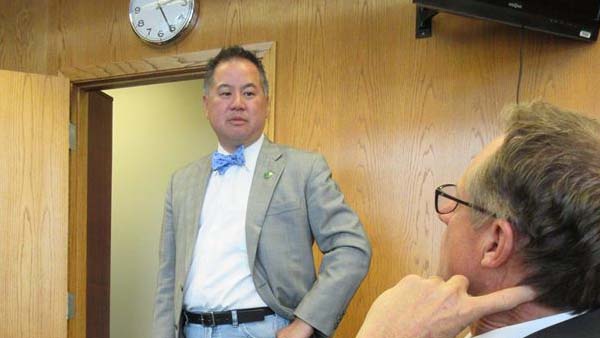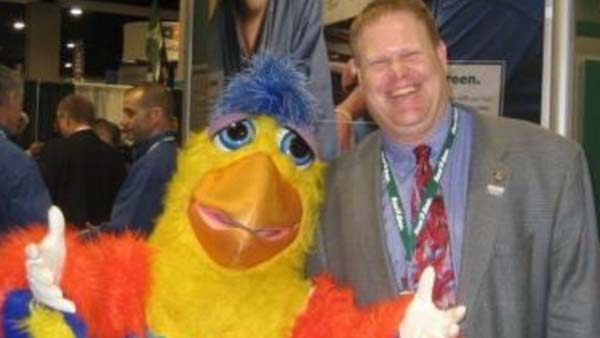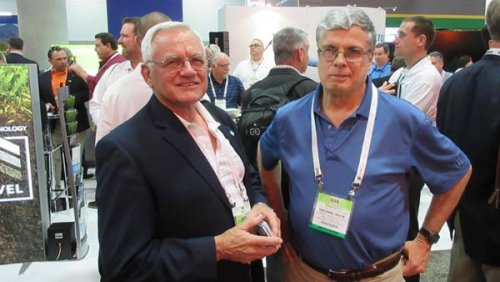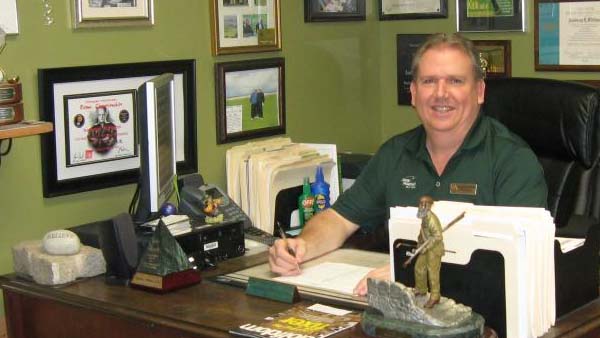
Golf's voice of reason
By John Reitman, in News,

McCormick, who spent years working as a teaching and tour professional and even landed a spot on a popular golf reality TV series, believes she can be that voice. She even created her own company to help facilitate the process of finding those stories, providing the data to prove them and then go about telling them to the public. The golf industry has been good at preaching to the choir about sustainability. What it has lacked is a voice with authority, with celebrity clout to help spread the message outside the ropes. McCormick's company, IMPACT360, which she started with business partner Gina Rizzi, offers sustainability consulting services, but does so much more. IMPACT360 also collects environmental, social and economic information from a client golf course, distills it all into quantifiable data and combines it all into a corporate sustainability report designed to show how golf can positively impact the lives of those who play it as well as those who do not. "I want to tell people what golf is doing and where the gaps are," McCormick said. "I want to help superintendents get the word out to the public about what they are doing." As a college player and later a struggling tour pro, McCormick, 33, possesses the knowledge and experience of an industry insider. And through the years she has seen, firsthand, that providing great playing conditions and BMPs focused on sustainability can coexist. She also has seen the other side, working alongside activists who view golf courses as toxic dumps. Soon, when she completes work toward a graduate degree with a focus on sustainability, she will officially be an expert in the field. "I have known for a long time that this is the message that needs to be told. I just didn't know how to do it," she said. "I wasn't as educated to the depths I am today. "I understand that I was not a sustainability expert. I have to earn that. That's why I am getting an MBA in sustainable management." After her college days, playing first at Daytona State College and later at Missouri State University, the Orlando, Florida native spent five years trying to work her way up the ranks as a tour player. She knocked on doors seeking her own endorsement deals and worked as a teaching pro before deciding in 2011 that she needed to try something else. She spent a year working for Green America, a D.C.-based not-for-profit focused on achieving economic and social justice and environmental sustainability and taking jabs at those that it perceives do not share its vision. Such activism, which at times had golf in its crosshairs, was a bad fit for a former golfer who spent years soaking in the sustainability efforts of superintendents nationwide. A year later, she earned a spot on the Golf Channel's Big Break reality show, which in 2012 took place in the Bahamas. It was then, while basking in the spotlight, that she realized she'd found an avenue to tell the message that she believed others needed to hear. "The people I worked with at Green America couldn't believe that I played a sport that 'carpets the world with artificial turf,' " McCormick said. "I now have more of a platform to talk about this. I need to fight for this. After seeing the environmentalist's' perspective, they're just not educated on this at all." McCormick is scheduled to graduate this month from the Presidio Graduate School in San Francisco with an MBA that focuses on environmental sustainability. And her company's first official client happens to be less than 10 miles from the Presidio. Pat Finlen, CGCS, general manager of The Olympic Club, first met McCormick during the 2013 Golf Industry Show in San Diego. It wasn't long after McCormick and Rizzi started IMPACT360 that he realized the newfound company and its vision of promoting sustainability was something that aligned with the club's philosophy. "We kept in touch and when I learned she was getting an MBA from Presidio Graduate School we started talking about sustainability," Finlen said. "When she co-founded IMPACT360 The Olympic Club got serious about producing a Corporate Social Responsibility Report. Aubrey understands golf having played professionally on mini tours and its positive role in society. "Doing a CSR is not required, it is a voluntary move on our part to tell the story of sustainability within our club. I wouldn't say we are the voice to tell golf's story. I do hope other courses follow our lead and take the step in telling their story as well." With her company still in its fledgling state, McCormick says she hasn't ruled out trying to get back out on the competitive circuit, but it's not for reasons some might think. The Olympic Club CSR report is due out next month, and it's no surprise that a facility that embraces its place in history, yet recognizes its role in a changing world, was the first to step forward. Membership at this 156-year-old club recognizes their responsibility in being a sound environmental neighbor in one of the country's most politically charged cities. They also know that when armed with this information, they are obligated to share it. Proving it practices sound BMPs is not always easy for a facility that borders the Pacific Ocean on one side and Lake Merced on the other. But, the club, along with others around the Lake Merced rim, has become a leader in the use of recycled water and other management practices, and it's time to tell that story. "The Olympic Club is first and foremost an athletic club that happens to have some great golf courses," Finlen said. "Our message is clear: 'We have a positive impact upon life in the San Francisco and greater Bay Area. We are passionate about our club, the environment and the positive impact The Olympic Club has upon the community.' " And now it has a voice to tell it.
- Read more...
- 4,995 views















